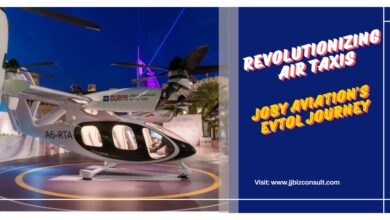SpaceX’s Historic Starship Test: A Leap Towards the Future of Space Travel

SpaceX stunned the world during its Starship rocket test over the weekend, catching its booster in midair after it came back from space. This groundbreaking achievement marks a significant milestone in the journey towards reusable rocket technology, a cornerstone of SpaceX’s ambitious plans for space exploration.
The Historic Catch
On October 13, 2024, SpaceX successfully launched its fifth test flight of the Starship rocket from its Starbase site in South Texas. The highlight of this mission was the dramatic midair catch of the Super Heavy booster, a feat never before accomplished1. The booster, towering over 20 stories tall, was caught by a pair of mechanical arms, affectionately known as “chopsticks,” attached to the launch tower. This maneuver is crucial for SpaceX’s vision of rapidly reusing rockets, significantly reducing the cost of space travel.

Space X: Challenges Ahead
Despite this success, the Starship launch system still faces numerous development challenges. The rocket must undergo rigorous testing and refinement before it can be deemed ready for missions to the moon for NASA, let alone Elon Musk’s grander dream of carrying humans to Mars. The complexity of these missions requires advancements in various technologies, including life support systems, radiation protection, and sustainable habitats for long-duration space travel.
Space X: Regulatory Hurdles
Adding to these technical challenges, SpaceX is also navigating regulatory hurdles. Recently, a California state commission voted against approving more SpaceX launches from the Vandenberg Space Force Base, located northwest of Los Angeles. This decision reflects growing concerns and discontent with the environmental and noise impacts of frequent rocket launches on local communities.
How does Reusable Rocket Technology work?
Reusable rocket technology is a game-changer in space exploration, aiming to significantly reduce the cost of launching payloads into space. Here’s a breakdown of how it works:
Key Components of Reusable Rockets
- Boosters: The first stage of the rocket, which provides the initial thrust to escape Earth’s gravity. In reusable rockets, these boosters are designed to return to Earth and be used again.
- Landing Systems: To recover the boosters, rockets are equipped with landing legs and grid fins. These components help control the descent and ensure a safe landing.
- Heat Shields: Protect the rocket during re-entry into Earth’s atmosphere, preventing damage from extreme heat.
The Process
- Launch: The rocket launches as usual, with the boosters providing the necessary thrust to propel the payload into space.
- Separation: Once the boosters have expended their fuel, they separate from the main rocket. The main rocket continues its journey to deliver the payload to its intended orbit.
- Descent and Landing: The boosters then begin their controlled descent back to Earth. Using grid fins for aerodynamic control and engines for a controlled landing burn, the boosters slow down and land vertically on a designated landing pad or drone ship.
- Recovery and Refurbishment: After landing, the boosters are recovered, inspected, and refurbished for future launches. This process involves checking for any damage, replacing worn-out parts, and preparing the booster for its next mission.
Benefits of Reusable Rockets
- Cost Efficiency: Reusing boosters drastically reduces the cost of each launch, making space access more affordable.
- Increased Launch Frequency: With reusable technology, rockets can be launched more frequently, accelerating the pace of space exploration and satellite deployment.
- Environmental Impact: Reducing the need to manufacture new rockets for each launch helps minimize the environmental footprint of space missions.
Examples of Reusable Rockets
- SpaceX’s Falcon 9: One of the most well-known reusable rockets, Falcon 9’s first stage has been successfully landed and reused multiple times.
- Blue Origin’s New Shepard: Designed for suborbital flights, New Shepard’s booster is also reusable, landing back on Earth after each mission.
Reusable rocket technology represents a significant leap forward in making space travel more sustainable and accessible. By continually refining these systems, companies like SpaceX and Blue Origin are paving the way for a future where space exploration is more routine and less costly. 🚀
More about SpaceX Falcon 9.
SpaceX Falcon 9: Revolutionizing Space Travel
Falcon 9 is a reusable, two-stage rocket designed and manufactured by SpaceX. It is the world’s first orbital-class reusable rocket, which has significantly reduced the cost of access to space.
Key Features
- Height and Mass: Falcon 9 stands at 70 meters (229.6 feet) tall and has a mass of 549,054 kg (1,207,920 lbs).
- Engines: The first stage is powered by nine Merlin engines, which generate more than 1.7 million pounds of thrust at sea level. The second stage is powered by a single Merlin Vacuum Engine.
- Payload Capacity: It can carry up to 22,800 kg (50,265 lbs) to Low Earth Orbit (LEO) and 8,300 kg (18,300 lbs) to Geostationary Transfer Orbit (GTO).
Reusability
The reusability of Falcon 9 is one of its most groundbreaking features. The first stage of the rocket is designed to return to Earth and land vertically, either on a drone ship at sea or on a landing pad on land. This process involves:
- Grid Fins: These are used to control the descent and orientation of the booster during re-entry.
- Landing Legs: Made of carbon fiber with aluminum honeycomb, these legs deploy just before landing to ensure a stable touchdown.
Achievements
- First Reusable Orbital-Class Rocket: Falcon 9 was the first rocket to successfully land and be reused for multiple missions.
- Commercial Success: It has launched numerous commercial satellites, cargo missions to the International Space Station (ISS), and even crewed missions under NASA’s Commercial Crew Program.
- Starlink Missions: Falcon 9 has been instrumental in deploying SpaceX’s Starlink satellite constellation, aimed at providing global internet coverage.
Recent Developments
SpaceX continues to refine and improve the Falcon 9. The latest version, known as Block 5, is designed for rapid reusability with minimal refurbishment between flights. This version has already demonstrated its capability by being reused multiple times.
Future Prospects
The success of Falcon 9 has paved the way for SpaceX’s more ambitious projects, such as the Starship rocket, which aims to carry humans to the Moon and Mars. The technology and experience gained from Falcon 9’s development and operations are crucial for these future missions.
Falcon 9’s innovative design and successful implementation of reusability have revolutionized the space industry, making space more accessible and setting new standards for future rockets.
Key Differences between Falcon 9 and Other Rockets?
Let’s compare SpaceX’s Falcon 9 with some other notable rockets to highlight the key differences:
Falcon 9 vs. Traditional Rockets
1. Reusability
- Falcon 9: Designed for reusability, with the first stage capable of landing back on Earth and being reused for multiple missions. This significantly reduces launch costs.
- Traditional Rockets: Typically expendable, meaning each stage is discarded after use, leading to higher costs per launch.
2. Engine Configuration
- Falcon 9: Uses nine Merlin engines on the first stage, providing redundancy. If one engine fails, the others can compensate.
- Traditional Rockets: Often use fewer engines, which can be more efficient but offer less redundancy.
3. Landing Technology
- Falcon 9: Equipped with grid fins and landing legs for controlled descent and landing.
- Traditional Rockets: Generally do not have landing capabilities and are designed to burn up on re-entry or crash into the ocean.
Falcon 9 vs. Other Modern Reusable Rockets
1. Blue Origin’s New Shepard
- Purpose: New Shepard is designed for suborbital flights, primarily for space tourism and scientific research.
- Reusability: Both the booster and the crew capsule are reusable.
- Comparison: Falcon 9 is designed for orbital missions, carrying heavier payloads and reaching higher altitudes.
2. Rocket Lab’s Electron
- Purpose: Electron is a small-lift launch vehicle designed for deploying small satellites into orbit.
- Reusability: Rocket Lab is working on making Electron’s first stage reusable, but it is not yet as established as Falcon 9.
- Comparison: Falcon 9 can carry much larger payloads and has a proven track record of reusability.
Falcon 9 vs. Heavy-Lift Rockets
1. Falcon Heavy
- Purpose: Falcon Heavy is essentially three Falcon 9 boosters strapped together, designed for heavy-lift missions.
- Reusability: Like Falcon 9, the side boosters of Falcon Heavy are reusable.
- Comparison: Falcon Heavy can carry much larger payloads compared to Falcon 9, making it suitable for more demanding missions.
2. NASA’s Space Launch System (SLS)
- Purpose: SLS is designed for deep space missions, including crewed missions to the Moon and Mars.
- Reusability: SLS is not reusable; it is designed for single-use missions.
- Comparison: Falcon 9 is more cost-effective for frequent launches, while SLS is tailored for specific, high-stakes missions.
Summary
- Reusability: Falcon 9’s reusability is a standout feature, reducing costs and increasing launch frequency.
- Versatility: Falcon 9 is versatile, capable of launching a wide range of payloads to various orbits.
- Cost Efficiency: The reusability and design of Falcon 9 make it more cost-efficient compared to many traditional and modern rockets.
Falcon 9’s innovative design and operational success have set new standards in the aerospace industry, making space more accessible and affordable.
The Road to Mars
Elon Musk’s vision of making humanity a multi-planetary species hinges on the success of the Starship program. The ability to catch and reuse boosters is a critical step towards achieving this goal. By reducing the cost and increasing the frequency of launches, SpaceX aims to make space travel more accessible and sustainable. The recent test is a testament to the company’s innovative spirit and relentless pursuit of technological breakthroughs.
Conclusion: SpaceX’s Historic Starship Test
SpaceX’s recent Starship test is a monumental step forward in the realm of space exploration. While significant challenges remain, both technical and regulatory, the successful midair catch of the booster demonstrates the potential of reusable rocket technology. As SpaceX continues to push the boundaries of what’s possible, the dream of human settlements on the moon and Mars moves closer to reality.
Stay tuned for more updates on SpaceX’s journey towards the stars.
Virgin Galactic News: Exciting First Tourist Flight to Space
True Satellite-to-Cellular Service by SpaceX and T-Mobile
SpaceX Stock Price – This is How to Buy





